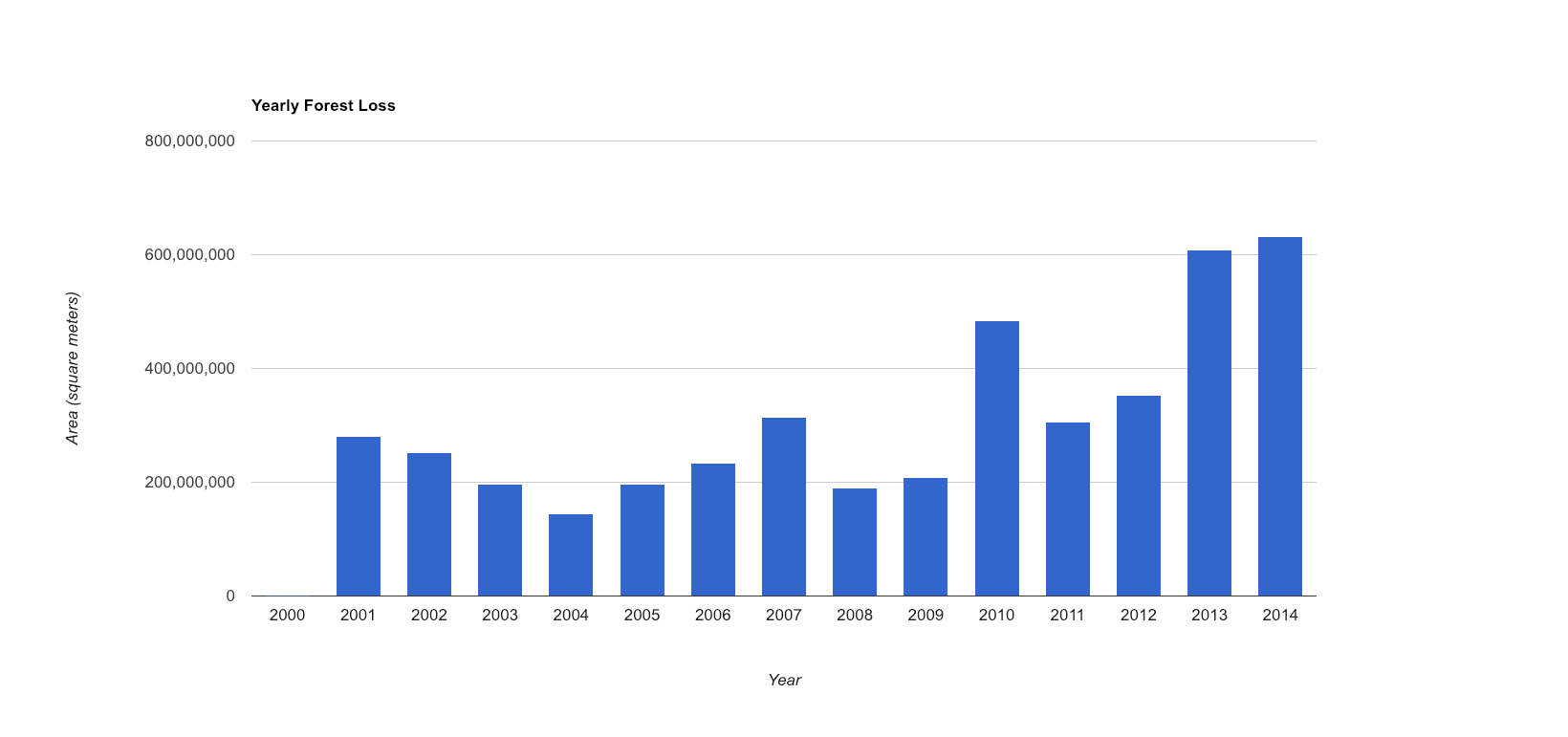计算年度森林损失
在上一部分中,您学习了如何使用 reduceRegion 方法计算指定感兴趣区域内损失的森林总面积。与其计算总损失,不如计算每年的损失。在 Earth Engine 中,可以使用分组缩减器来实现此目的。
如需对 reduceRegion() 的输出进行分组,您可以指定一个分组频段,该频段按整数像素值定义组。在以下示例中,我们稍微修改了之前的代码,并向原始图片添加了 lossYear 波段。lossYear 波段中的每个像素都包含 0 到 14 之间的值,用于指示发生损失的年份。我们还将 reducer 更改为分组 reducer,并指定分组波段的波段指数 (1),以便根据 lossYear 波段中的值对像素面积进行求和和分组。
代码编辑器 (JavaScript)
// Load country boundaries from LSIB. var countries = ee.FeatureCollection('USDOS/LSIB_SIMPLE/2017'); // Get a feature collection with just the Congo feature. var congo = countries.filter(ee.Filter.eq('country_co', 'CF')); // Get the loss image. // This dataset is updated yearly, so we get the latest version. var gfc2017 = ee.Image('UMD/hansen/global_forest_change_2017_v1_5'); var lossImage = gfc2017.select(['loss']); var lossAreaImage = lossImage.multiply(ee.Image.pixelArea()); var lossYear = gfc2017.select(['lossyear']); var lossByYear = lossAreaImage.addBands(lossYear).reduceRegion({ reducer: ee.Reducer.sum().group({ groupField: 1 }), geometry: congo, scale: 30, maxPixels: 1e9 }); print(lossByYear);
运行上述代码后,您会看到以嵌套列表形式输出的每年森林损失面积,该列表名为 groups。我们可以稍微调整一下输出格式,使结果成为一个字典,其中年份为键,损失面积为值。请注意,我们使用 format() 方法将年份值从 0-14 转换为 2000-2014。
代码编辑器 (JavaScript)
var statsFormatted = ee.List(lossByYear.get('groups')) .map(function(el) { var d = ee.Dictionary(el); return [ee.Number(d.get('group')).format("20%02d"), d.get('sum')]; }); var statsDictionary = ee.Dictionary(statsFormatted.flatten()); print(statsDictionary);
制作图表
现在,我们已经有了年度损失数据,可以准备图表了。我们将使用 ui.Chart.array.values() 方法。此方法接受一个输入值数组(或列表)和一个 X 轴标签数组(或列表)。
代码编辑器 (JavaScript)
var chart = ui.Chart.array.values({ array: statsDictionary.values(), axis: 0, xLabels: statsDictionary.keys() }).setChartType('ColumnChart') .setOptions({ title: 'Yearly Forest Loss', hAxis: {title: 'Year', format: '####'}, vAxis: {title: 'Area (square meters)'}, legend: { position: "none" }, lineWidth: 1, pointSize: 3 }); print(chart);
结果应如下图所示。

